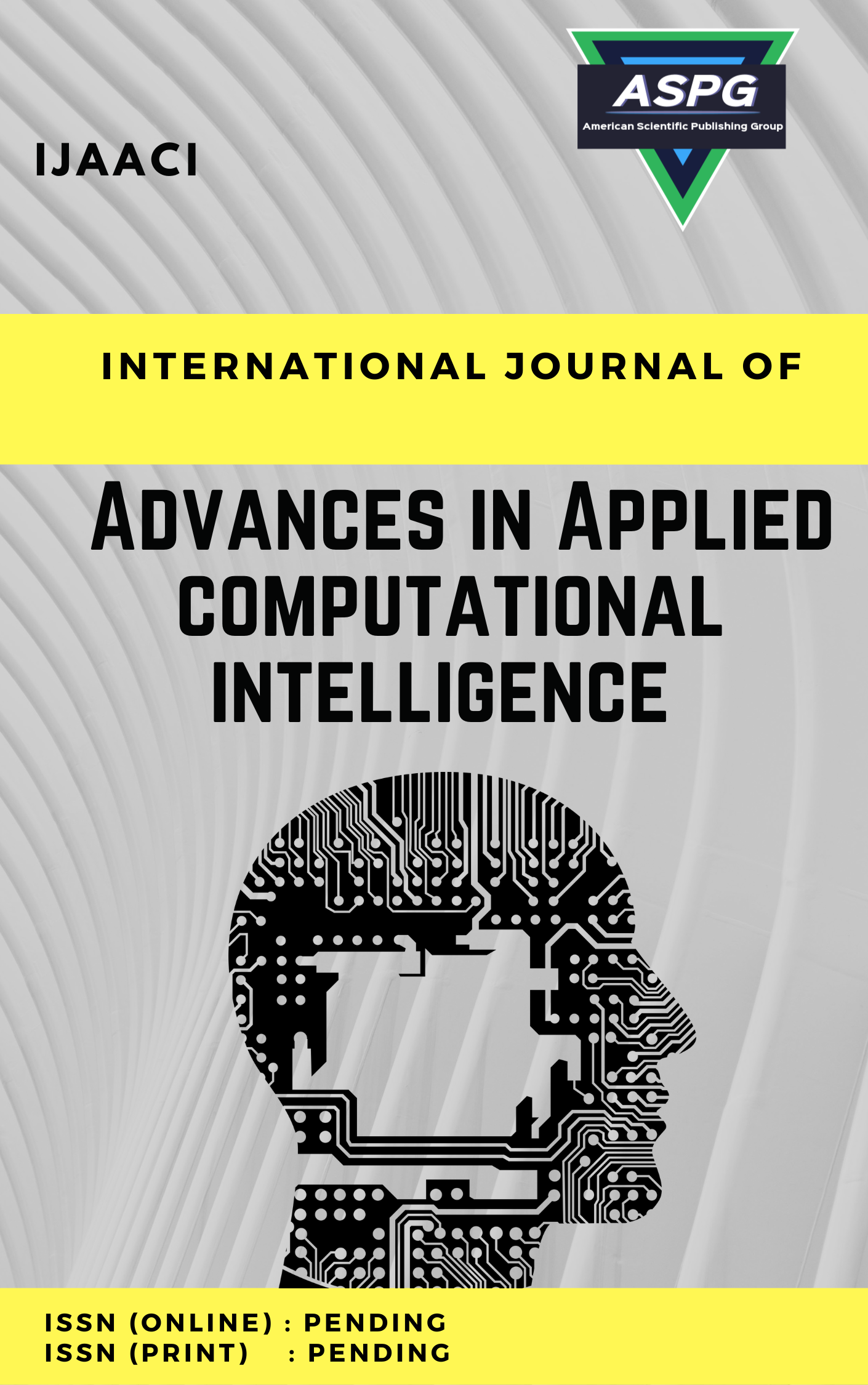

Volume 2 , Issue 2 , PP: 08-15, 2022 | Cite this article as | XML | Html | PDF | Full Length Article
Abedallah Z. Abualkishik 1 * , Rasha Almajed 2
Doi: https://doi.org/10.54216/IJAACI.020201
The depletion of fossil fuel reserves, rising fuel costs, and heightened awareness of ecological problems are just a few of the recent developments that have contributed to a greater reliance on renewable energy alternatives. There is a growing need to evaluate appropriate locations in order to make the most efficient use of renewable energy alternatives. This research looks at the parameters that determine how well-spaced solar farms can be in Egypt. So, the multi-criteria decision-making (MCDM) methodology is used to deal with these criteria. The MCDM is a hybrid with the neutrosophic set to deal with vague information. This paper presented the neutrosophic AHP method to select the best location for solar power (SP). The AHP method is selected to compute the weights of factors in an easy and efficient way. This paper collected the criteria from previous work, then evaluated by the experts. The case study in Egypt is presented to select the best location for SP. The sensitivity analysis is presented to show the rank of locations when changing the weights of factors.
Neutrosophic Set , Multi-Criteria Decision Making , Solar Power , Site Selection
[1] Y. Simsek, D. Watts, and R. Escobar, “Sustainability evaluation of concentrated solar power (CSP) projects under clean development mechanism (CDM) by using multi criteria decision method (MCDM),” Renew. Sustain. Energy Rev., vol. 93, pp. 421–438, 2018.
[2] C.-N. Wang, V. T. Nguyen, H. T. N. Thai, and D. H. Duong, “Multi-criteria decision making (MCDM) approaches for solar power plant location selection in Viet Nam,” Energies, vol. 11, no. 6, p. 1504, 2018.
[3] R. Ghasempour, M. A. Nazari, M. Ebrahimi, M. H. Ahmadi, and H. Hadiyanto, “Multi-Criteria Decision Making (MCDM) Approach for Selecting Solar Plants Site and Technology: A Review.,” Int. J. Renew. Energy Dev., vol. 8, no. 1, 2019.
[4] M. B. Alqaderi, W. Emar, and O. A. Saraereh, “Concentrated solar power site suitability using GIS-MCDM technique taken UAE as a case study,” Int. J. Adv. Comput. Sci. Appl., vol. 9, no. 4, 2018.
[5] M. Jahangiri, A. A. Shamsabadi, A. Mostafaeipour, M. Rezaei, Y. Yousefi, and L. M. Pomares, “Using fuzzy MCDM technique to find the best location in Qatar for exploiting wind and solar energy to generate hydrogen and electricity,” Int. J. Hydrogen Energy, vol. 45, no. 27, pp. 13862–13875, 2020.
[6] T.-C. Wang and S.-Y. Tsai, “Solar panel supplier selection for the photovoltaic system design by using fuzzy multi-criteria decision making (MCDM) approaches,” Energies, vol. 11, no. 8, p. 1989, 2018.
[7] S. Ishfaq, S. Ali, and Y. Ali, “Selection of optimum renewable energy source for energy sector in Pakistan by using MCDM approach,” Process Integr. Optim. Sustain., vol. 2, pp. 61–71, 2018.
[8] Y. Wu, C. Xu, and T. Zhang, “Evaluation of renewable power sources using a fuzzy MCDM based on cumulative prospect theory: A case in China,” Energy, vol. 147, pp. 1227–1239, 2018.
[9] M. Mullai and R. Surya, “Neutrosophic inventory backorder problem using triangular neutrosophic numbers,” Neutrosophic Sets Syst., vol. 31, pp. 148–155, 2020.
[10] S. A. Edalatpanah, “Data envelopment analysis based on triangular neutrosophic numbers,” CAAI Trans. Intell. Technol., vol. 5, no. 2, pp. 94–98, 2020.
[11] S. Broumi, D. Nagarajan, A. Bakali, M. Talea, F. Smarandache, and M. Lathamaheswari, “The shortest path problem in interval valued trapezoidal and triangular neutrosophic environment,” Complex Intell. Syst., vol. 5, pp. 391–402, 2019.
[12] S. Luthra, K. Govindan, R. K. Kharb, and S. K. Mangla, “Evaluating the enablers in solar power developments in the current scenario using fuzzy DEMATEL: An Indian perspective,” Renew. Sustain. Energy Rev., vol. 63, pp. 379–397, 2016.
[13] K. S. Garud, S. Jayaraj, and M. Lee, “A review on modeling of solar photovoltaic systems using artificial neural networks, fuzzy logic, genetic algorithm and hybrid models,” Int. J. Energy Res., vol. 45, no. 1, pp. 6–35, 2021.
[14] R. Malemnganbi and B. A. Shimray, “Solar power plant site selection: a systematic literature review on MCDM techniques used,” Electron. Syst. Intell. Comput. Proc. ESIC 2020, pp. 37–48, 2020.
[15] S. K. Saraswat, A. K. Digalwar, S. S. Yadav, and G. Kumar, “MCDM and GIS based modelling technique for assessment of solar and wind farm locations in India,” Renew. Energy, vol. 169, pp. 865–884, 2021.
[16] R. Nie, J. Wang, and H. Zhang, “Solving solar-wind power station location problem using an extended weighted aggregated sum product assessment (WASPAS) technique with interval neutrosophic sets,” Symmetry (Basel)., vol. 9, no. 7, p. 106, 2017.
[17] S. Khan, S. Abdullah, S. Ashraf, R. Chinram, and S. Baupradist, “Decision Support Technique Based on Neutrosophic Yager Aggregation Operators: Application in Solar Power Plant Locations—Case Study of Bahawalpur, Pakistan,” Math. Probl. Eng., vol. 2020, pp. 1–21, 2020.
[18] A. Chakraborty, S. P. Mondal, A. Ahmadian, N. Senu, S. Alam, and S. Salahshour, “Different forms of triangular neutrosophic numbers, de-neutrosophication techniques, and their applications,” Symmetry (Basel)., vol. 10, no. 8, p. 327, 2018.
[19] S. A. Edalatpanah, “A direct model for triangular neutrosophic linear programming,” Int. J. neutrosophic Sci., vol. 1, no. 1, pp. 19–28, 2020.
[20] M. Junaid, Y. Xue, M. W. Syed, J. Z. Li, and M. Ziaullah, “A neutrosophic ahp and topsis framework for supply chain risk assessment in automotive industry of Pakistan,” Sustainability, vol. 12, no. 1, p. 154, 2019.